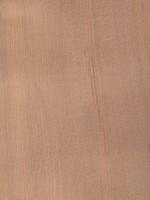 |
Common Name(s): Tasmanian Myrtle, Myrtle Beech Scientific Name: Nothofagus cunninghamii Distribution: Southeast Australia and New Zealand Tree Size: 65-100 ft (20-30 m) tall, 3-5 ft (1-1.5 m) trunk diameter Average Dried Weight: 39 lbs/ft3 (625 kg/m3) Specific Gravity (Basic, 12% MC): .50, .63 Janka Hardness: 1,310 lbf (5,840 N) Modulus of Rupture: 14,230 lbf/in2 (98.2 MPa) Elastic Modulus: 1,830,000 lbf/in2 (12.62 GPa) Crushing Strength: 7,160 lbf/in2 (49.4 MPa) Shrinkage: Radial: 5.4%, Tangential: 10.0%, Volumetric: 16.3%, T/R Ratio: 1.9 |
Color/Appearance: Heartwood is a pink or light reddish brown. Narrow sapwood is paler, and is ambiguously demarcated by a zone of intermediate coloration. Can have a wavy or curly grain which has a very satiny appearance. Much more uncommon, Tasmanian Myrtle can also have dark black streaks in the wood, sometimes referred to as “tiger myrtle.”
Grain/Texture: Grain is usually straight, but may be interlocked, wavy, or curly. Texture is very fine and uniform, with a high natural luster.
Endgrain: Diffuse-porous (sometimes semi-ring-porous); small to medium pores in no specific arrangement, numerous to very numerous; solitary and commonly in radial multiples of 2-4; tyloses occasionally present (though not visible with hand lens); growth rings distinct due to change in pore frequency; narrow rays not visible without lens, normal spacing; parenchyma absent.
Rot Resistance: Rated as non-durable to perishable regarding decay resistance. Also susceptible to insect attack.
Workability: Tasmanian Myrtle generally produces excellent results with both hand and machine tools; however, areas of figured wood with abnormal grain can pose difficulties in machining. Can be difficult to air-dry heartwood material without defects. Responds very well to steam bending. Turns superbly. Glues, stains, and finishes well.
Odor: No characteristic odor.
Allergies/Toxicity: Although severe reactions are quite uncommon, Tasmanian Myrtle has been reported to cause mucous membrane irritation. See the articles Wood Allergies and Toxicity and Wood Dust Safety for more information.
Pricing/Availability: Tasmanian Myrtle is commonly available in Australia in the form of lumber and turning blanks. It is infrequently exported to the United States, expect prices to be in the mid to high range depending on the amount of figure in the wood.
Sustainability: This wood species is not listed in the CITES Appendices or on the IUCN Red List of Threatened Species.
Common Uses: Veneer, plywood, boatbuilding, turned objects, carving, flooring, and furniture.
Comments: Tasmanian Myrtle is not closely related to the lumber that’s considered Myrtle in the United States (Umbellularia californica)—technically, neither species is considered a true myrtle, which is restricted to the Myrtus genus. Tasmanian Myrtle is actually closer in relation to beech (Fagus genus), and is sometimes referred to as Myrtle Beech or Silver Beech.
None available.
Scans/Pictures: A special thanks to Steve Earis for providing the wood sample of this wood species.


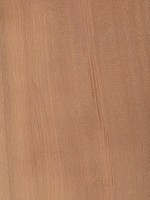
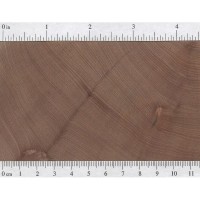
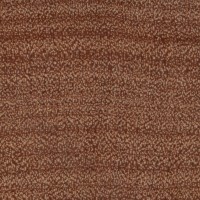
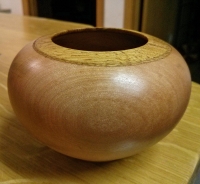



It does not grow in New Zealand naturally, only Australia.
The confusion could be because some of the NZ Nothofagus species yield timber with some similar characteristics, that could easily be mistaken for N. cunninghamii (especially N. menziesii and N. fusca).
Nothofagus is a “Gondwanan” genus, with 3 Australian species, 4 from New Caledonia, 5 from New Zealand, 10 from Argentina and Chile and over a dozen from New Guinea. The temperate climate species (From southern Australia, New Zealand and South America) mostly have a lot in common, but yes, also plenty of differences.
This was sold to me as tiger myrtle – I think correctly!
Yes that is Tiger Myrtle. I have a serving board made from a $4 off cut which has superb grain with half tiger-half beech myrtle, I’ve got 4 very large pieces of spalted myrtle as well
I was using a bookmatched pair of fiddleback figured timber that was labelled as “Australian Cherry” for a guitar for my HSC project, and I couldn’t find anything on the internet about it. I found out just recently that the other name given to it is Tasmanian Myrtle, from this site: https://www.tastimber.tas.gov.au/SpeciesDetailsGeneral.aspx?SpeciesID=4

We call it Myrtle Beech in Victoria, Australia. It’s fairly common in sheltered cool temperate rainforest areas (climate similar to wetter areas of Oregon state), and less common as a sub alpine tree. Wonderful for cabinetry and similar uses, it has a hard to define special look, feel and smell to it, but it’s hopeless if it’s exposed to the weather.
I noticed a sweet spicy smell while cutting this wood. It was very pleasent in my opinion. Seeing how I had not smelt the same odor from any of my other woods till I cut this on my scroll saw I would assume it is the myrtle.